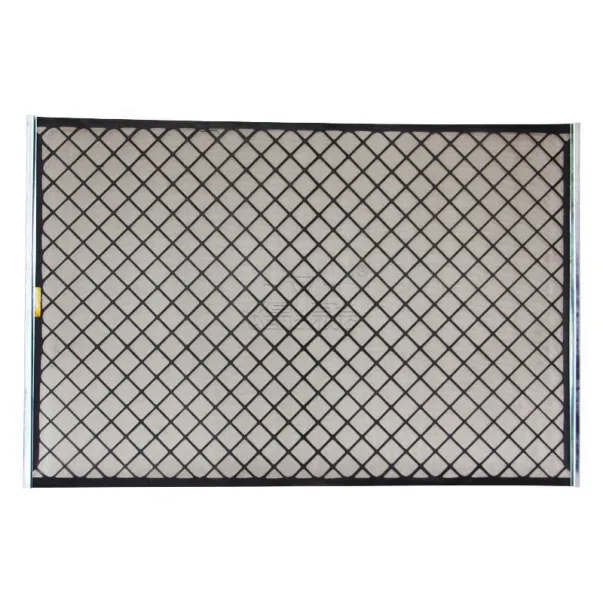- Industrial zone, South of Anping Town, Hengshui, Hebei, China.
- sales@hfpetromesh.com
- +86-18931809706
 Afrikaans
Afrikaans  Albanian
Albanian  Amharic
Amharic  Arabic
Arabic  Armenian
Armenian  Azerbaijani
Azerbaijani  Basque
Basque  Belarusian
Belarusian  Bengali
Bengali  Bosnian
Bosnian  Bulgarian
Bulgarian  Catalan
Catalan  Cebuano
Cebuano  Corsican
Corsican  Croatian
Croatian  Czech
Czech  Danish
Danish  Dutch
Dutch  English
English  Esperanto
Esperanto  Estonian
Estonian  Finnish
Finnish  French
French  Frisian
Frisian  Galician
Galician  Georgian
Georgian  German
German  Greek
Greek  Gujarati
Gujarati  Haitian Creole
Haitian Creole  hausa
hausa  hawaiian
hawaiian  Hebrew
Hebrew  Hindi
Hindi  Miao
Miao  Hungarian
Hungarian  Icelandic
Icelandic  igbo
igbo  Indonesian
Indonesian  irish
irish  Italian
Italian  Japanese
Japanese  Javanese
Javanese  Kannada
Kannada  kazakh
kazakh  Khmer
Khmer  Rwandese
Rwandese  Korean
Korean  Kurdish
Kurdish  Kyrgyz
Kyrgyz  Lao
Lao  Latin
Latin  Latvian
Latvian  Lithuanian
Lithuanian  Luxembourgish
Luxembourgish  Macedonian
Macedonian  Malgashi
Malgashi  Malay
Malay  Malayalam
Malayalam  Maltese
Maltese  Maori
Maori  Marathi
Marathi  Mongolian
Mongolian  Myanmar
Myanmar  Nepali
Nepali  Norwegian
Norwegian  Norwegian
Norwegian  Occitan
Occitan  Pashto
Pashto  Persian
Persian  Polish
Polish  Portuguese
Portuguese  Punjabi
Punjabi  Romanian
Romanian  Russian
Russian  Samoan
Samoan  Scottish Gaelic
Scottish Gaelic  Serbian
Serbian  Sesotho
Sesotho  Shona
Shona  Sindhi
Sindhi  Sinhala
Sinhala  Slovak
Slovak  Slovenian
Slovenian  Somali
Somali  Spanish
Spanish  Sundanese
Sundanese  Swahili
Swahili  Swedish
Swedish  Tagalog
Tagalog  Tajik
Tajik  Tamil
Tamil  Tatar
Tatar  Telugu
Telugu  Thai
Thai  Turkish
Turkish  Turkmen
Turkmen  Ukrainian
Ukrainian  Urdu
Urdu  Uighur
Uighur  Uzbek
Uzbek  Vietnamese
Vietnamese  Welsh
Welsh  Bantu
Bantu  Yiddish
Yiddish  Yoruba
Yoruba  Zulu
Zulu
- Afrikaans
- Albanian
- Amharic
- Arabic
- Armenian
- Azerbaijani
- Basque
- Belarusian
- Bengali
- Bosnian
- Bulgarian
- Catalan
- Cebuano
- Corsican
- Croatian
- Czech
- Danish
- Dutch
- English
- Esperanto
- Estonian
- Finnish
- French
- Frisian
- Galician
- Georgian
- German
- Greek
- Gujarati
- Haitian Creole
- hausa
- hawaiian
- Hebrew
- Hindi
- Miao
- Hungarian
- Icelandic
- igbo
- Indonesian
- irish
- Italian
- Japanese
- Javanese
- Kannada
- kazakh
- Khmer
- Rwandese
- Korean
- Kurdish
- Kyrgyz
- Lao
- Latin
- Latvian
- Lithuanian
- Luxembourgish
- Macedonian
- Malgashi
- Malay
- Malayalam
- Maltese
- Maori
- Marathi
- Mongolian
- Myanmar
- Nepali
- Norwegian
- Norwegian
- Occitan
- Pashto
- Persian
- Polish
- Portuguese
- Punjabi
- Romanian
- Russian
- Samoan
- Scottish Gaelic
- Serbian
- Sesotho
- Shona
- Sindhi
- Sinhala
- Slovak
- Slovenian
- Somali
- Spanish
- Sundanese
- Swahili
- Swedish
- Tagalog
- Tajik
- Tamil
- Tatar
- Telugu
- Thai
- Turkish
- Turkmen
- Ukrainian
- Urdu
- Uighur
- Uzbek
- Vietnamese
- Welsh
- Bantu
- Yiddish
- Yoruba
- Zulu
swage-locked grating
Swage-Locked Grating An Innovative Approach to Fiber Optic Technology
Swage-locked grating, a technique used in the field of fiber optics, represents a significant advancement in the creation and application of fiber Bragg gratings (FBGs). FBGs are vital components in optical fiber systems, employed for various purposes including sensing, wavelength filtering, and communication. The swage-locking method offers a reliable, efficient, and robust means of embedding gratings into optical fibers, providing several advantages over traditional techniques.
The essence of swage-locked grating lies in its ability to securely fix the grating within the fiber by mechanical means. This process involves deforming the fiber around the grating, creating a tight interlock that ensures minimal movement and maximal stability. One of the key benefits of this method is its ability to maintain the integrity of the optical properties of the fiber, thereby enhancing the performance of the grating. The swage-locking process also helps in reducing the risk of damage during installation and operation, which is critical in high-stress environments.
swage-locked grating

Moreover, swage-locked gratings are particularly advantageous in high-temperature or harsh environmental conditions
. Traditional methods of grating installation can lead to performance degradation when exposed to extreme temperatures or mechanical stresses. In contrast, swage-locked gratings demonstrate superior thermal stability and mechanical resilience, allowing for their use in various applications ranging from aerospace to structural health monitoring.In addition to their physical robustness, swage-locked gratings provide versatility in design. The ability to fabricate gratings with various spacing and profiles caters to different sensor needs. This flexibility allows engineers to tailor FBG systems for specific applications, enhancing their effectiveness in real-world scenarios. For example, engineers can design specific wavelength filters that minimize crosstalk in communication systems or create sensitive sensors that respond to minute changes in temperature or strain.
As the demand for advanced fiber optic systems continues to grow, the swage-locked grating technique stands out as a promising option that combines robustness, reliability, and design flexibility. With ongoing research and development, it is likely that this innovative approach will pave the way for even more sophisticated optical technologies in the future, ultimately leading to advancements in telecommunications, sensing, and beyond.
-
Welded Steel Bar Grating: The Strongest Choice for Industrial FlooringNewsMay.21,2025
-
Steel Grating for Sale: The Ultimate Anti-Slip SolutionNewsMay.21,2025
-
Steel Frame Shaker Screens: Unmatched Durability for Demanding OperationsNewsMay.21,2025
-
Shaker Screens: Your Ultimate Solution for Oil & Gas FiltrationNewsMay.21,2025
-
Press Locked Steel Grating: The Smarter Choice for Heavy-Duty FlooringNewsMay.21,2025
-
Helicopter Deck Safety Nets: Protect Your Crew and EquipmentNewsMay.21,2025